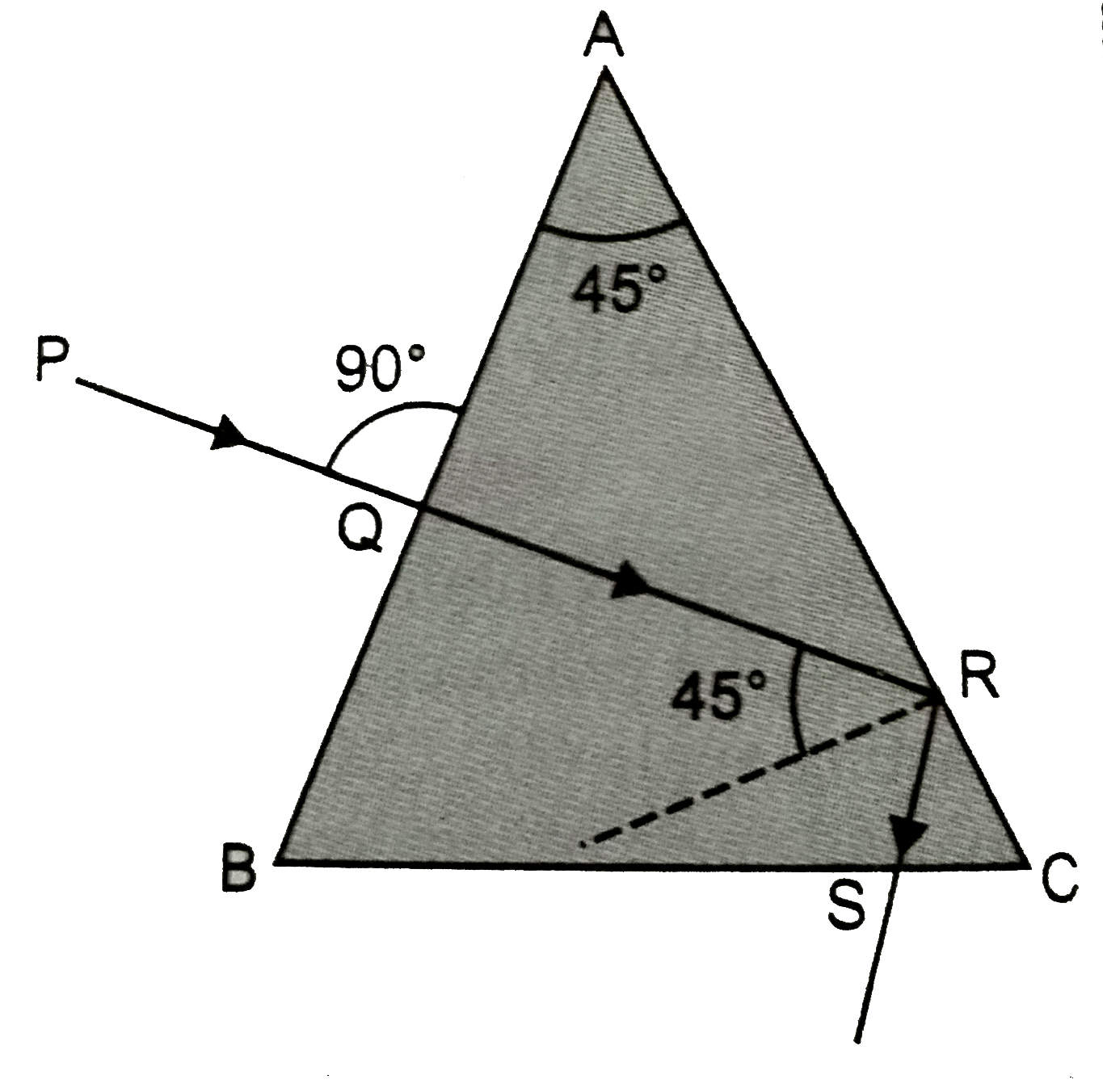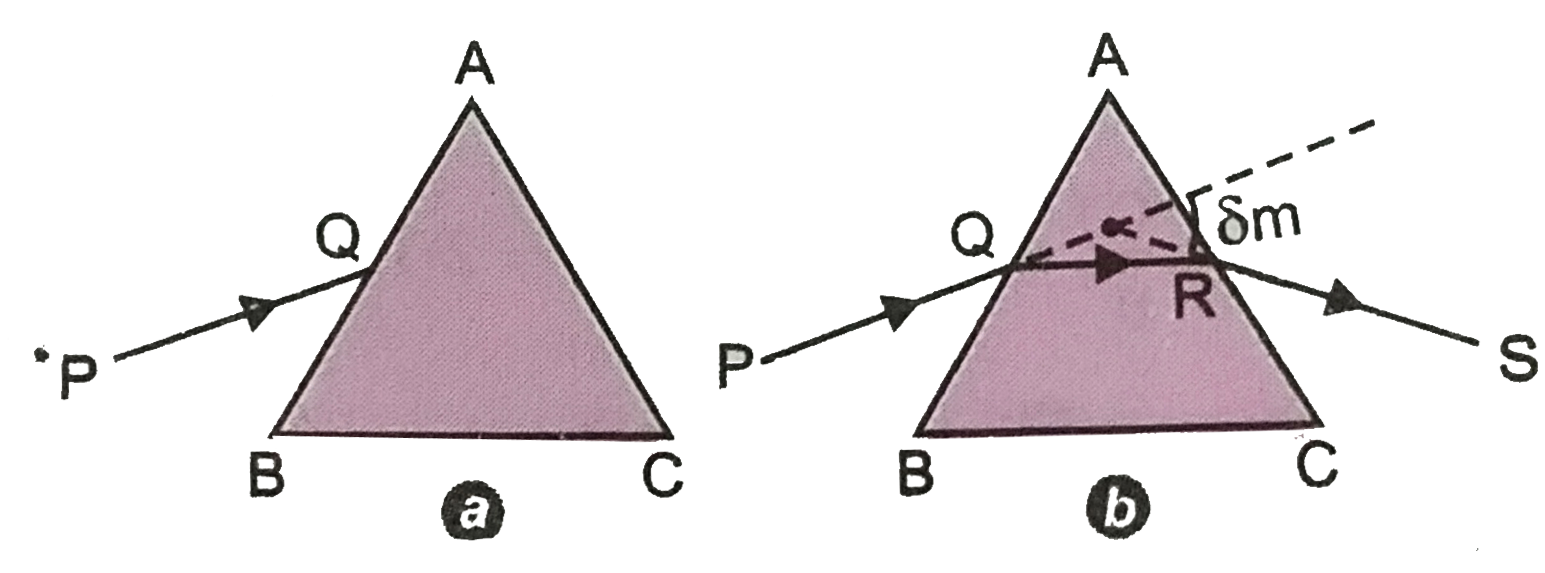As shown in Fig. PQ is a ray incident on prism ABC. Show the corresponding refracted and emergent rays. The critical angle for the material of the prism is 45∘. What is refractive index of the material of prism ?
 .
.
The correct Answer is:√2
As PQ is normal to AB,
∴i1=0,r1=0
The ray goes straight along PQR. At R,√i=45∘ which is critical angle of material of the prism.
Therefore, QR suffers total internal reflection at R and goes along RS
μ=1sinC=1sin45∘=11/√2=√2
Topper's Solved these Questions
- OPTICSBook:PRADEEPChapter:OPTICSExercise:Problems for practice
Explore 4 Videos
- OPTICSBook:PRADEEPChapter:OPTICSExercise:Comprehension 1
Explore 1 Video
- OPTICSBook:PRADEEPChapter:OPTICSExercise:Value based questions
Explore 3 Videos
- MAGNETIC EFFECT OF CURRENT AND MAGNETISMBook:PRADEEPChapter:MAGNETIC EFFECT OF CURRENT AND MAGNETISMExercise:Competition Focus (Multiple Choice Questions)
Explore 2 Videos
Similar Questions
A ray of light is incident on a prism of refracting angle A. if θC is the critical angle for the material of the prism with respect to the surrounding air, then:
View SolutionA ray PQ incident on face AB of a prism ABC, as shown in Fig., emerges from the face AC such that AQ=AR. Draw the ray diagram showing the pasage of the ray through the prism. If the angle of prism is 60∘ and refractive index of the material of the prism is √3, determine the values of angle of incidence and angle of deviation.
 .
.
View Solution
Knowledge Check
A trihedral prism with refracting angle 60∘ deviates a light ray by 30∘. The refractive index of the material of prism
Amay be equal to √2Bcan not be greater than √2Ccan not be less than √2Dnone of theseA monochromatic ray of light is incident normally on one of the refracting surfaces of a prism . The emergent ray grazes the second refracting surface . What is the angle of the prism if the refractive index of the material of the prism is 1.6 ?
A35∘B39∘C42∘D44∘If the critical angle for the material of a prism is C and the angle of the prism is A, then there will be no emergent ray when
Aafter deviation it will emerge from the second refacting surfaceBit is totally reflected on the second surface and emeges out perpendicularly from third surface in air .Cit is totally reflected from the second and third refracting surface and finally emerges out from the first surfaceDit is totally reflected from all the three sides of prism and never emerges out
A ray of light incident at an angle 90° with the face of an equilateral prism passes symmetrically. Calculate the refractive index of the material of the prism
View SolutionA thin prism of refracting angle 2∘ deviates an incident ray through an angle of 1∘.Find the value of refractive index of material of prism.
View SolutionA ray PQ incident on the refracting face BA is refracted in the prism BAC as shown in the figure and emerges from the other refracting face AC as RS such that AQ = AR. If the angle of prism A=60∘ and the refractive index of the material of prism is 3, then the angle of deviation of the ray is

View SolutionA ray of light is incident normally on one of the refracting surfaces of a prism of refracting angle A,. The emergent ray grazes the other refracting surface. Find the refractive index of the material ofprism.
View SolutionWhen a ray of light is incident normally on one refracting surface of an equilateral prism (Refractive index of the material of the prism =1.5
View Solution

